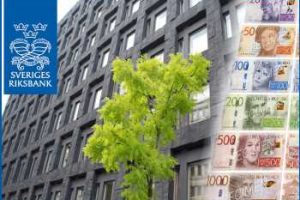Sweden Central Bank Hikes Rate; Starts Bond Sales

Despite weak economic activity, Sweden’s central bank raised its benchmark rate by half-percentage point to curb the weakness in currency and also decided to sell government bonds to reduce the asset holdings at a faster pace.
At the first monetary policy meeting of Erik Thedeen as the governor of Riksbank, the Executive Board lifted the policy rate by 50 basis points to 3.00 percent, with effect from February 15. The board said the policy rate will probably be raised further during the spring.
The central bank started tightening its policy in April 2022, when the policy rate was zero percent.
Under the new leadership, the board decided to actively sell government bonds from April.
Thedeen succeeded former Governor Stefan Ingves in January. The new governor focused on strengthening the currency and bring inflation down.
If the currency continues to be weak, it will be considerably more difficult to sustainably return inflation to the target, the bank noted. In the current situation, a stronger krona would be desirable, Riksbank said.
By tightening policy more now, the bank said it is reducing the risk that the high inflation will remain for a longer period and thus that even greater tightening would be needed further ahead.
Inflation is forecast to rise to 8.6 percent in 2023, before easing sharply to 3.6 percent next year. At the same time, the bank expects the economy to contract 1.1 percent this year but to expand 0.9 percent in 2024.
In 2025, inflation is seen at 2.4 percent and economic growth at 1.9 percent.
Capital Economics’ Andrew Kenningham said the policy rate will rise a bit further in the coming months rather than peak at 3 percent. Nonetheless, the economist still suspects that the Riksbank will begin to loosen policy again earlier than most other European central banks as the economy slides into a deep recession.
Although policymakers are trying to stem currency weakness, a housing market correction and weaker economic activity suggest there are limits to the number of future rate hikes, ING economists said.
Source: Read Full Article
